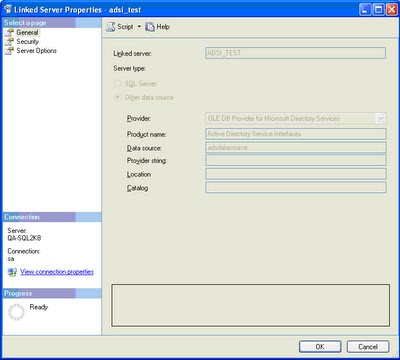ERROR:
An error occurred while preparing the query ... for execution against OLE DB provider ADSDSOObject for linked server.
Optional Solutions/problems:
Add the server name to the LDAP address: LDAP://CN=aaa,CN=OuTree,DC=aaa1,DC=aaa2 --> LDAP://SERVERNAME/CN=aaa,CN=OuTree,DC=aaa1,DC=aaa2.
ERROR:
The OLE DB provider "ADSDSOObject" for linked server "adsi_test" reported an error. The provider indicates that the user did not have the permission to perform the operation.
Optional Solutions/problems:
Run the query with user that have relevant permissions in the LDAP.
ERROR:
Cannot fetch a row from OLE DB provider "ADSDSOObject" for linked server "adsi_test".
Optional Solutions/problems:
Maybe the data from the LDAP is wrong.
ERROR:
An error occurred while preparing the query "
...........
" for execution against OLE DB provider "ADSDSOObject" for linked server "adsi_test".
Optional Solutions/problems:
- Wrong syntax of the query.
- Maybe there is a problem to run the query from other machine that it's not the SQL Server.

